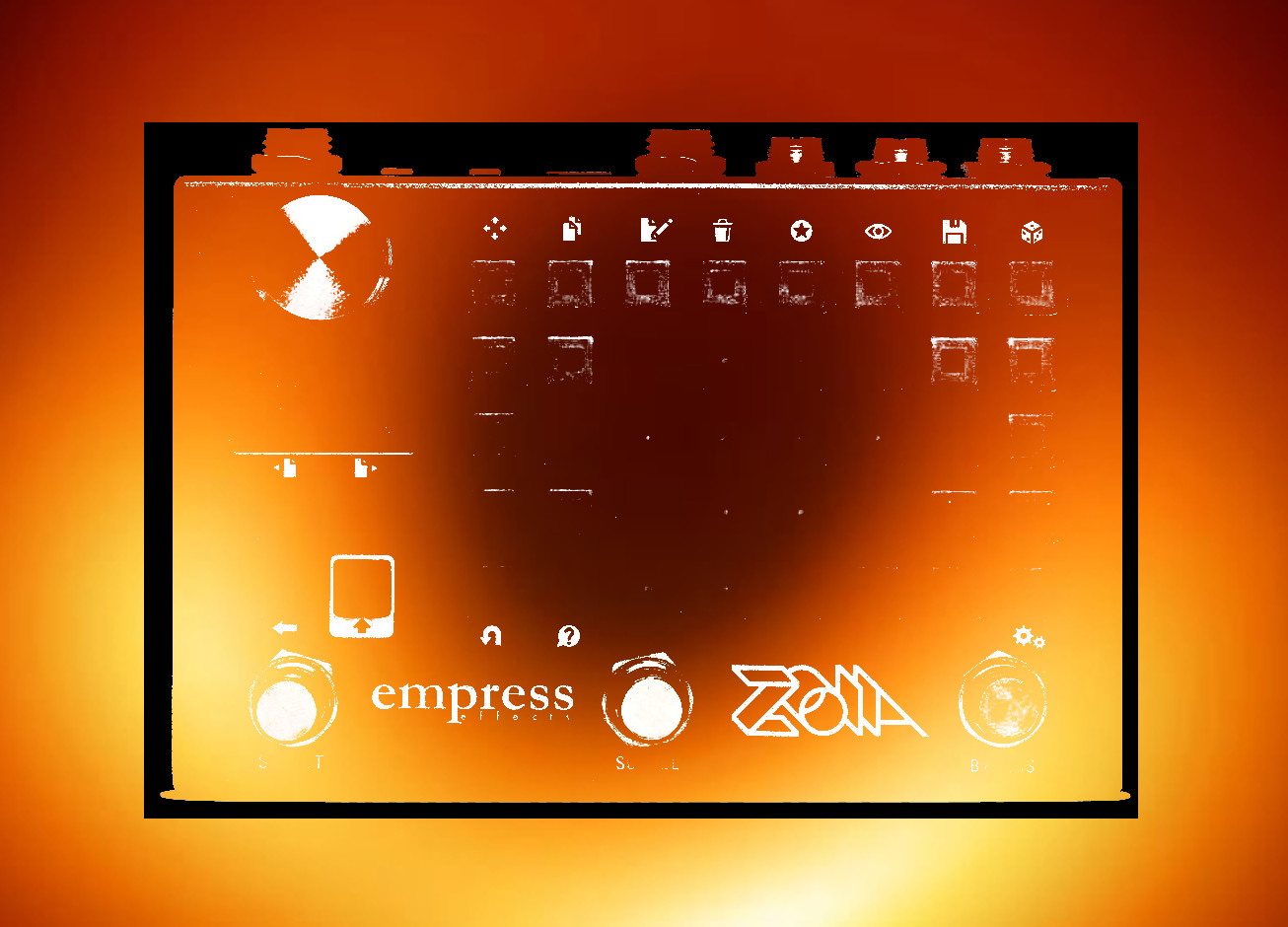The ‘nocturne suite’ as I think of them comprise two patches: Nocturne arp is a four-voice poly-arpeggiating synth, while Nocturne loop extends the voice count to five and adds a ‘sketchbook’ overdubbing loop for building little compositions. Originally, my plan was just to produce the arp synth, but I ended up liking the synth voice I created for it, and I wanted a version with more control and options. Then I thought, it would be neat if I added the sketchbook looper I used for Keypad and Keyed Poly 4.
Something about the synths — which are based on PWM square waves — feels nocturnal to me; the arpeggiator can become quite dreamy, while the sketchbook looper allows for compositions that bend a little on the dark side. Also, naming things is hard.
The synths are both default MIDI channel 1 (the MIDI modules are located on the second page), and they produce stereo signals. Both run a little hot, so there’s no native audio pass-through, but it could -probably- be added? Maybe? I didn’t want to chance it for a public release.
Nocturne arp:
Nocturne arp is a polyphonic, poly-arpeggiating synth. What do I mean by poly-arpeggiating? Instead of sharing an arpeggiator, each voice has its own arpeggiator (with shared controls). You can run them synced together to produce a traditional polyphonic/chord arpeggiator, but you can also run them independently, so that each voice’s arpeggio is initiated by the keypress that gates that voice, which allows for some interesting rhythmic interplay between voices.
Controls:
Stompswitches:
Left — tap tempo (also replicated by the UI button in the top right corner, which flashes with the current tempo; the patch also accepts MIDI clock, and there is a clock divider for the patch located on the third page)
Middle — arp on/off (also replicated by the UI button in the top left corner)
Right — ‘latch’ arp; this is really a pseudo-latch — it holds the envelopes open rather than sustaining the arpeggio
Front page:
Across the top row are OCTAVE buttons to set the range of the arpeggiator. There is also a SHAPE button that choose between up, down, and up/down for how the voices progress through the octaves. Then there is a SLEW control to introduce portamento (the portamento is only applied to the arpeggiator, not the base pitch).
There are a number of interesting options across the second row.
Sync arps — when this is on the voices’ arpeggiators will move together; if a new key is pressed, its voice will be introduced at the octave the arpeggio is currently on. When this control is off, each voice will independently initiate its own arpeggio.
Up-down — this determines whether the arpeggio moves up (ascending pitch) or down (descending pitch).
Play once — allows the arpeggio to be heard just once, when a key is pressed
Retrigger envelopes — this will retrigger the voice’s envelope each time a new pitch in the arpeggio is reached.
‘Normal’ mode — the arpeggios are made from looping envelopes run through steps modules. Because of how the steps modules subdivide their input, without compensation this produces arpeggios that spend more time in middle octaves than high or low ones. Normal mode (somewhat) corrects this. But both modes have their benefits: the unevenness of non-normal mode has a sort of bounciness to it.
The rest of the controls on the front page are devoted to the synth voice and are fairly standard except ARP keytrack, which allows you to control have much the filter tracks the arpeggiation; when it is set to negative numbers, the filter will close more as the pitch ascends (which can be useful for taming some of the high-end).
Along with the clock divider, you will find the reverb and output module for the patch on the third page.
Nocturne loop:
Nocturne loop takes the synth voice in a different direction, exchanging arpeggiation for a looper sketchbook. You can record, overdub, and make little compositions just using the internal voice and a MIDI controller.
Controls:
Stompswitches:
Left — cue record (also replicated by the UI button in the top left corner). When recording is cued, the UI button will go from dim to bright red. When recording is occurring it will change from red to orange. Recording won’t begin until a MIDI note is played, which I find makes timing a lot easier.
The same process is used for overdubbing (the patch will automatically bypass overdubbing when recording is completed).
Middle — reverse the looper (also replicated by a UI button next to the record button)
Right — reset the looper (also replicated by a UI button next to the reverse button)
Front page:
Along with the UI buttons mentioned above there are controls for LOOPER LEVEL and LOOPER SPEED.
The synth engine for this patch has a few more options.
Along with the dedicated PWM LFO, there is another LFO located on the front page that can be directed to modulate the filter or pitch (or both). Set the pitch depth to .1 or A1 and the LFO shape to a square and you have a mini arp.
NOISE MOD can be used in small amounts to thicken the sound, but it gets more destructive as you increase its depth.
The PULSEWIDTH control allows you to manually set the pulsewidth. You can also direct to the ADSR to the pulsewidth with the PWM ENV DEPTH. As with Nocturne arp, there is also an LFO dedicated to PWM.
There is also a global HIGH-PASS filter. It is located pre-looper, so you can record high-passed sounds to help keep the mix a little less busy.
There are also dedicated reverb controls. The reverb is located post-looper.



This is awesome, thank you!